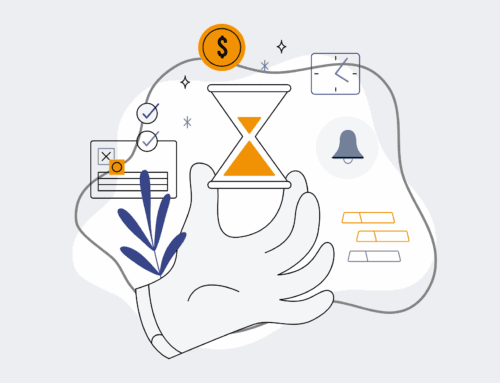A Glossary of Essential Keap Platform & Automation Terminology for HR & Recruiting Professionals
Navigating the landscape of modern HR and recruiting often means embracing powerful automation and CRM platforms like Keap. To truly leverage these tools, a clear understanding of the underlying terminology is crucial. This glossary is designed to equip HR leaders and recruiting professionals with precise definitions of key terms, explaining how each applies to streamline talent acquisition, enhance candidate experience, and optimize your operational efficiency.
Keap (formerly Infusionsoft)
Keap is an all-in-one CRM, sales, and marketing automation platform designed to help small and growing businesses organize, automate, and scale. For HR and recruiting professionals, Keap serves as a powerful central hub for managing candidate relationships, tracking applications, automating communication sequences, and maintaining a robust talent pipeline. It moves beyond basic contact management, allowing recruiters to segment talent pools, personalize outreach, and automate follow-ups, transforming the candidate journey from initial contact to successful onboarding. Keap’s capabilities directly contribute to reducing manual workload and improving the speed and quality of hires.
CRM (Customer Relationship Management)
While traditionally associated with sales, a Customer Relationship Management (CRM) system is indispensable for modern HR and recruiting. A CRM, like Keap, provides a centralized platform to manage and analyze all interactions and data with prospective and current talent. For HR, this means a unified view of candidate profiles, communication history, application statuses, interview feedback, and onboarding progress. It acts as a single source of truth, ensuring that no candidate falls through the cracks, improving the candidate experience, and enabling more strategic talent pool management. A robust CRM enhances communication efficiency and data-driven decision-making in recruiting.
Automation
Automation in the context of HR and recruiting refers to the use of technology to perform tasks or processes with minimal human intervention, typically based on predefined rules or triggers. This can range from simple tasks like sending automated email acknowledgments to complex multi-step workflows such as candidate sourcing, interview scheduling, offer letter generation, and onboarding document dissemination. By automating repetitive and administrative tasks, HR and recruiting professionals can significantly reduce manual workload, eliminate human error, speed up response times, and refocus their expertise on strategic initiatives like candidate engagement and talent strategy, leading to a more efficient and scalable operation.
Campaign (Keap Term)
Within Keap, a Campaign is a strategic, pre-designed series of automated actions and communications triggered by specific events or criteria. These are typically multi-stage journeys that guide a contact through a desired process. For HR, a Keap campaign can be designed to nurture passive candidates with relevant content, automate the multi-step onboarding process for new hires, or re-engage candidates from a past talent pool for new roles. Campaigns ensure consistent, timely, and personalized communication at scale, reducing the need for manual outreach and improving the overall candidate or employee experience, from initial interest through to long-term engagement.
Sequence (Keap Term)
A Sequence is a linear series of automated steps or actions that occur within a larger Keap campaign. It represents a more focused, step-by-step progression of tasks. For example, a “Candidate Nurture Sequence” might involve sending an initial informational email, waiting three days, sending a follow-up email with a relevant blog post, and then applying a specific tag if the candidate clicks a link. Sequences are highly customizable and can include emails, texts, internal tasks, or even conditional logic based on contact behavior. They are fundamental for breaking down complex HR processes into manageable, automated steps, ensuring timely and relevant interactions without constant manual oversight.
Tag (Keap Term)
In Keap, a Tag is a customizable label or keyword that can be applied to a contact record, serving as a powerful tool for categorization, segmentation, and automation triggers. Tags are incredibly versatile for HR and recruiting. Examples include “Applicant: [Job Title],” “Interviewed,” “Onboarding Complete,” “High Potential Talent,” or “Located: [City].” These tags allow recruiters to quickly identify specific groups of candidates, trigger automated follow-up sequences, or pull segmented reports. By effectively tagging contacts, HR teams can maintain a highly organized and searchable talent database, enabling precision targeting for future recruitment efforts and personalized communication.
Lead Scoring
Lead Scoring is a methodology used to assign numerical values (or “scores”) to candidates or leads based on their engagement, demographic information, and behaviors, indicating their potential fit, interest, or quality. In recruiting, this process helps HR prioritize candidates who are most active, best qualified, or most likely to accept an offer. For instance, a candidate might receive points for viewing a job description multiple times, downloading a company culture guide, or having specific keywords in their resume. Keap can automate lead scoring based on predefined rules, allowing recruiters to focus their time and resources on the most promising talent, thereby improving conversion rates and time-to-hire.
API (Application Programming Interface)
An API, or Application Programming Interface, is a set of rules and protocols that allows different software applications to communicate with each other and exchange data. For HR and recruiting, APIs are crucial for creating a seamless and integrated technology ecosystem. For example, an API might enable Keap to automatically pull new candidate profiles from an Applicant Tracking System (ATS), push interview schedules to a calendaring tool, or transfer new hire data to an HR Information System (HRIS). Leveraging APIs reduces manual data entry, minimizes errors, and ensures that information flows efficiently across all critical HR tech tools, leading to a more connected and efficient operation.
Webhook
A webhook is an automated message sent from an application when a specific event occurs, acting as a “reverse API.” Instead of one system polling another for information, the sending system proactively “pushes” data to a predefined URL when an event happens. In HR, a webhook might be configured to fire from a job board the moment a new application is submitted, sending that data to an automation platform like Make.com, which then initiates a workflow in Keap. This allows for real-time data transfer and immediate action, such as creating a new contact record, triggering an acknowledgment email, or updating a status, significantly accelerating response times and streamlining initial candidate processing.
Integration
Integration refers to the process of connecting two or more distinct software systems or applications so they can work together, share data, and function as a unified whole. For HR and recruiting, robust integrations are paramount for building an efficient tech stack. This means connecting your Keap CRM with your Applicant Tracking System (ATS), email marketing platforms, calendaring tools, e-signature solutions (like PandaDoc), and even AI-powered tools for resume parsing or candidate screening. Effective integrations eliminate data silos, reduce duplicate data entry, improve data accuracy, and automate handoffs between different stages of the recruitment and onboarding process, creating a cohesive and streamlined operational environment.
Workflow
A workflow is a structured sequence of tasks, steps, or activities that are performed in a specific order to achieve a particular organizational outcome. In HR and recruiting, common workflows include candidate application processing, interview scheduling, offer management, background checks, and new hire onboarding. When these workflows are automated, the system guides the process, ensuring consistency, compliance, and efficiency. For example, an automated onboarding workflow might trigger welcome emails, assign training modules, and prompt document completion in a predefined sequence, reducing manual oversight and ensuring a smooth transition for new employees. Well-defined workflows are key to scalable and error-free HR operations.
Funnel
A funnel, in business and particularly in HR and recruiting, is a visual representation of the journey a candidate or prospect takes, from initial awareness or interest through various stages until a desired outcome is achieved (e.g., being hired). Recruitment funnels typically track stages like “Applicant,” “Screened,” “Interviewed,” “Offer Extended,” and “Hired.” Each stage represents a narrowing of the candidate pool. By analyzing the funnel, HR professionals can identify bottlenecks, measure conversion rates between stages, and optimize their processes to improve efficiency and candidate progression. Keap can be used to manage and track candidates through various stages of the recruiting funnel, providing valuable insights.
Segmentation
Segmentation is the process of dividing a larger group of contacts (in HR, this means candidates or employees) into smaller, more specific groups based on shared characteristics, behaviors, or criteria. For recruiters, this might involve segmenting a talent pool by skills (e.g., “Software Engineer”), experience level, location, desired salary range, or past application history. Keap’s tagging and custom field capabilities are ideal for this. Effective segmentation allows HR and recruiting teams to deliver highly targeted and personalized communications, craft specific outreach campaigns for niche roles, or manage different employee groups with tailored messaging, significantly increasing the relevance and effectiveness of their engagement efforts.
Lifecycle Marketing (Keap Concept)
Lifecycle Marketing is a comprehensive strategy that maps out the entire journey of a contact, from an initial prospect to a long-term, loyal client or advocate, and aims to provide relevant value at each stage. In HR and recruiting, this concept translates directly to the “Candidate Lifecycle” or “Employee Lifecycle.” It encompasses everything from attracting passive talent (awareness), through application and interviewing (consideration), hiring and onboarding (conversion), to ongoing employee engagement and retention. Keap’s automation and CRM features are designed to support this entire lifecycle, ensuring consistent communication, personalized experiences, and efficient management at every touchpoint, ultimately building stronger relationships with talent.
Reporting & Analytics
Reporting and analytics in the context of HR and recruiting involve the systematic collection, analysis, interpretation, and presentation of data to gain insights and inform strategic decision-making. Keap provides robust reporting capabilities for tracking campaign performance, contact engagement, and sales data. For HR, this translates to analyzing recruitment funnel efficiency, measuring time-to-hire, evaluating the effectiveness of different candidate sources, tracking key performance indicators (KPIs) for recruiters, and assessing the impact of automation on operational costs. Data-driven insights from reporting and analytics enable HR professionals to continuously optimize their strategies, improve recruitment outcomes, and demonstrate the tangible ROI of their efforts.
If you would like to read more, we recommend this article: The Keap Automation ROI Calculator: From Justification to Transformative HR








